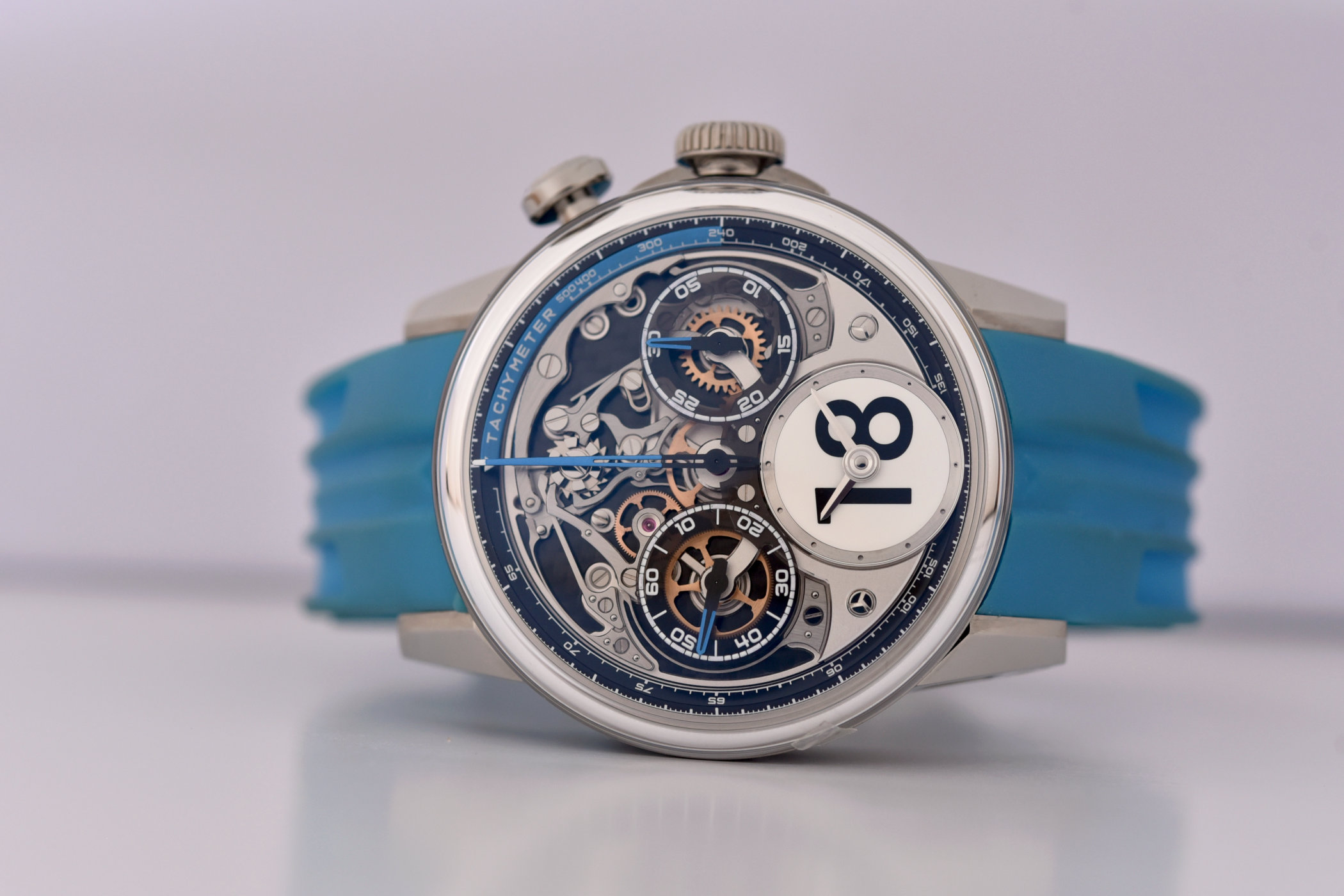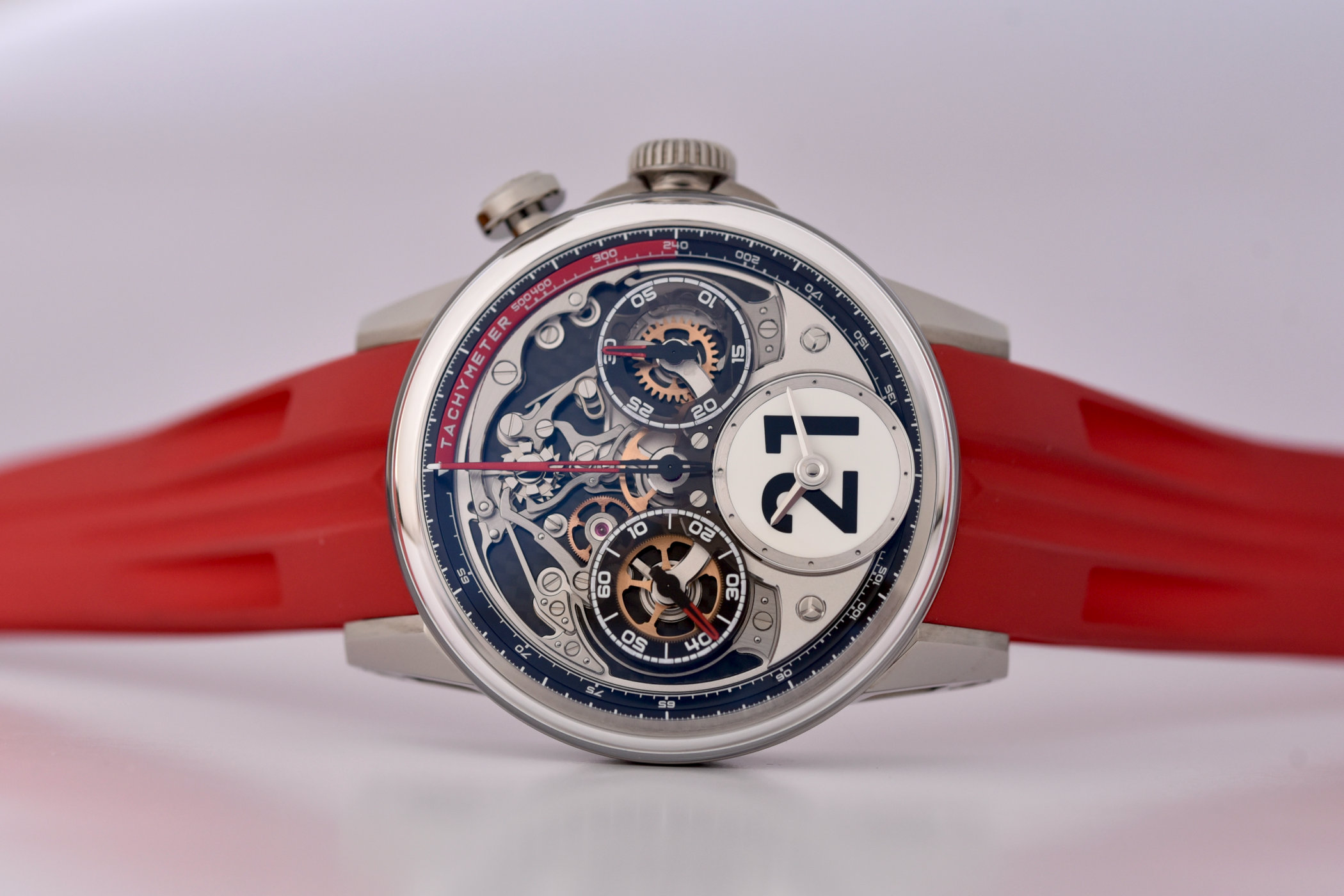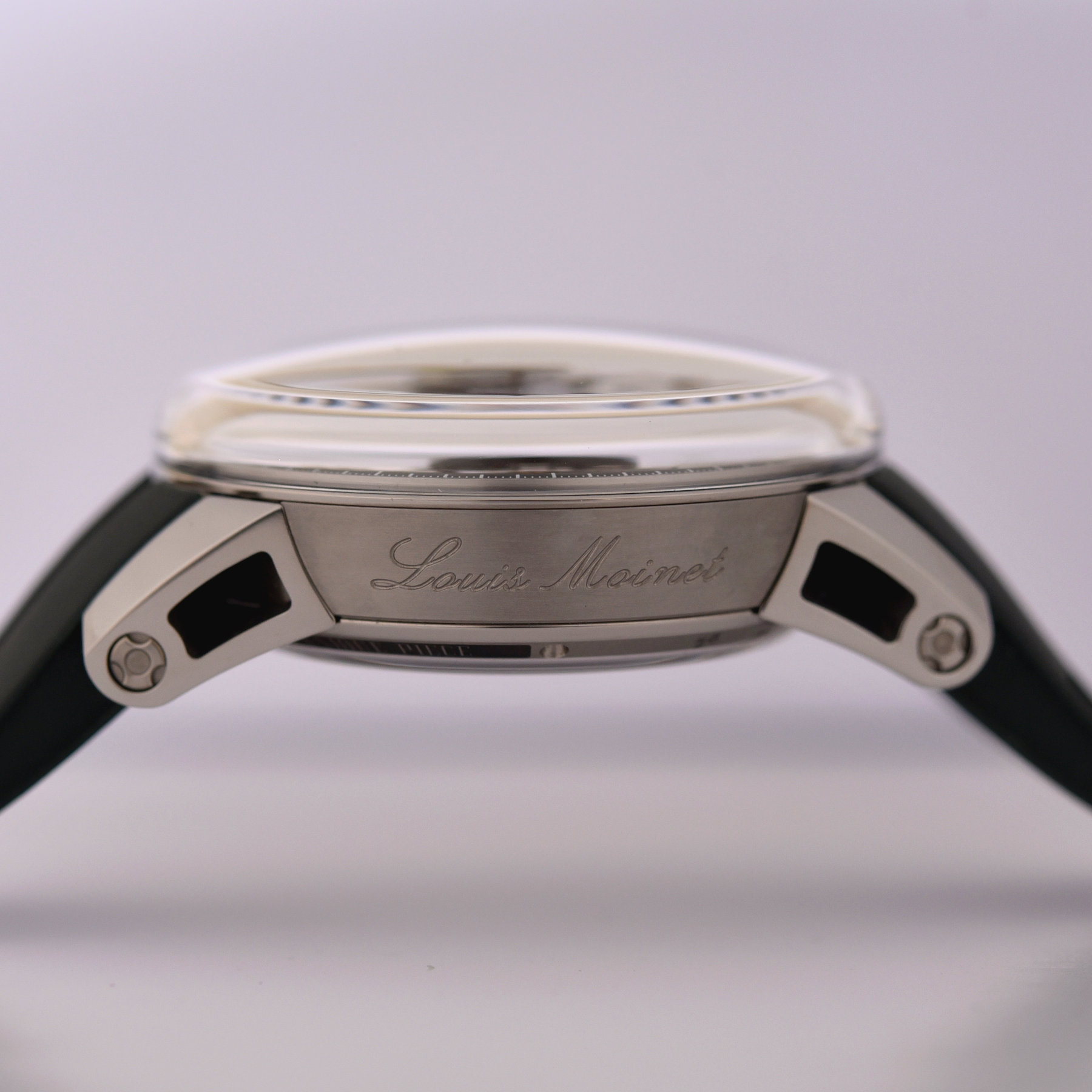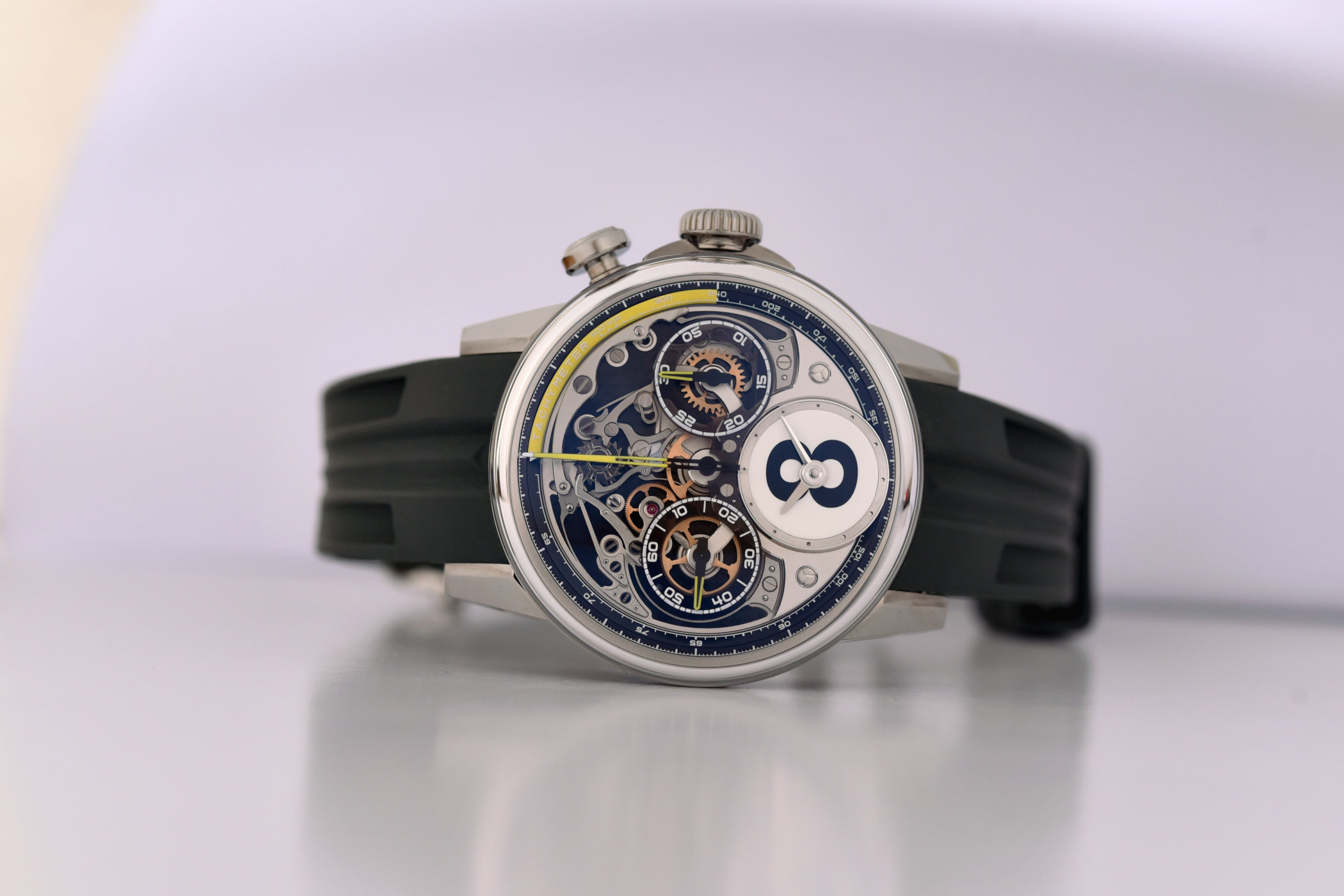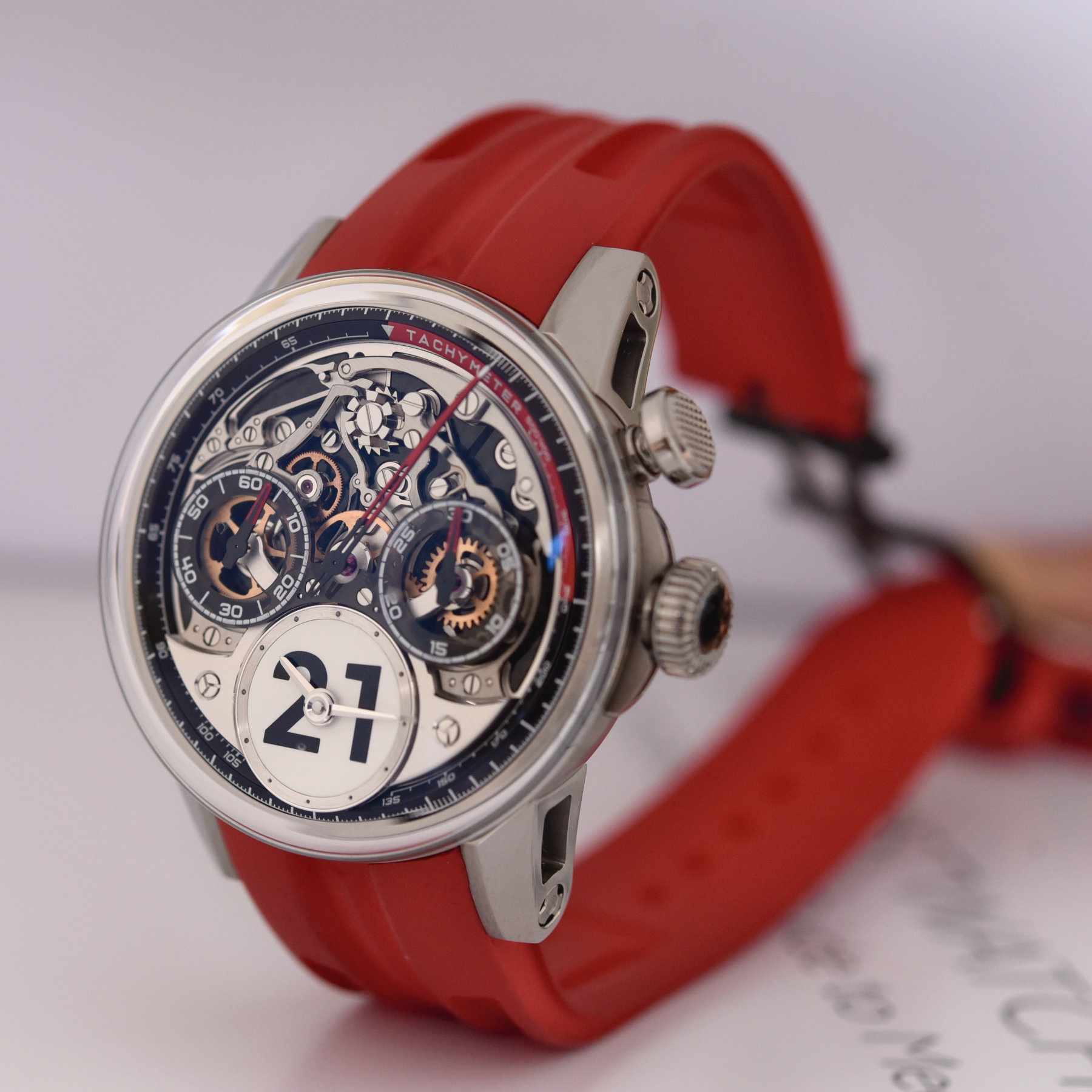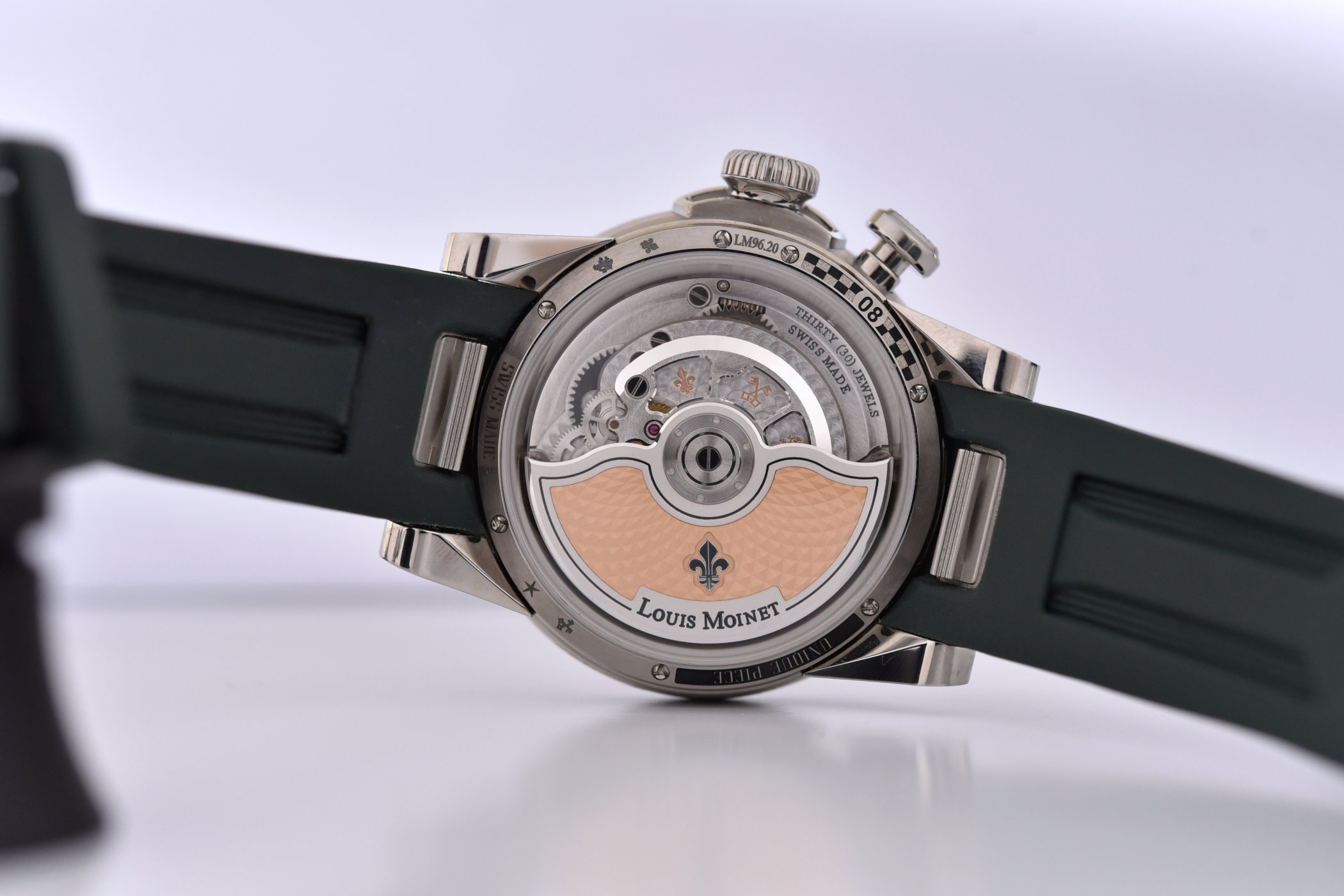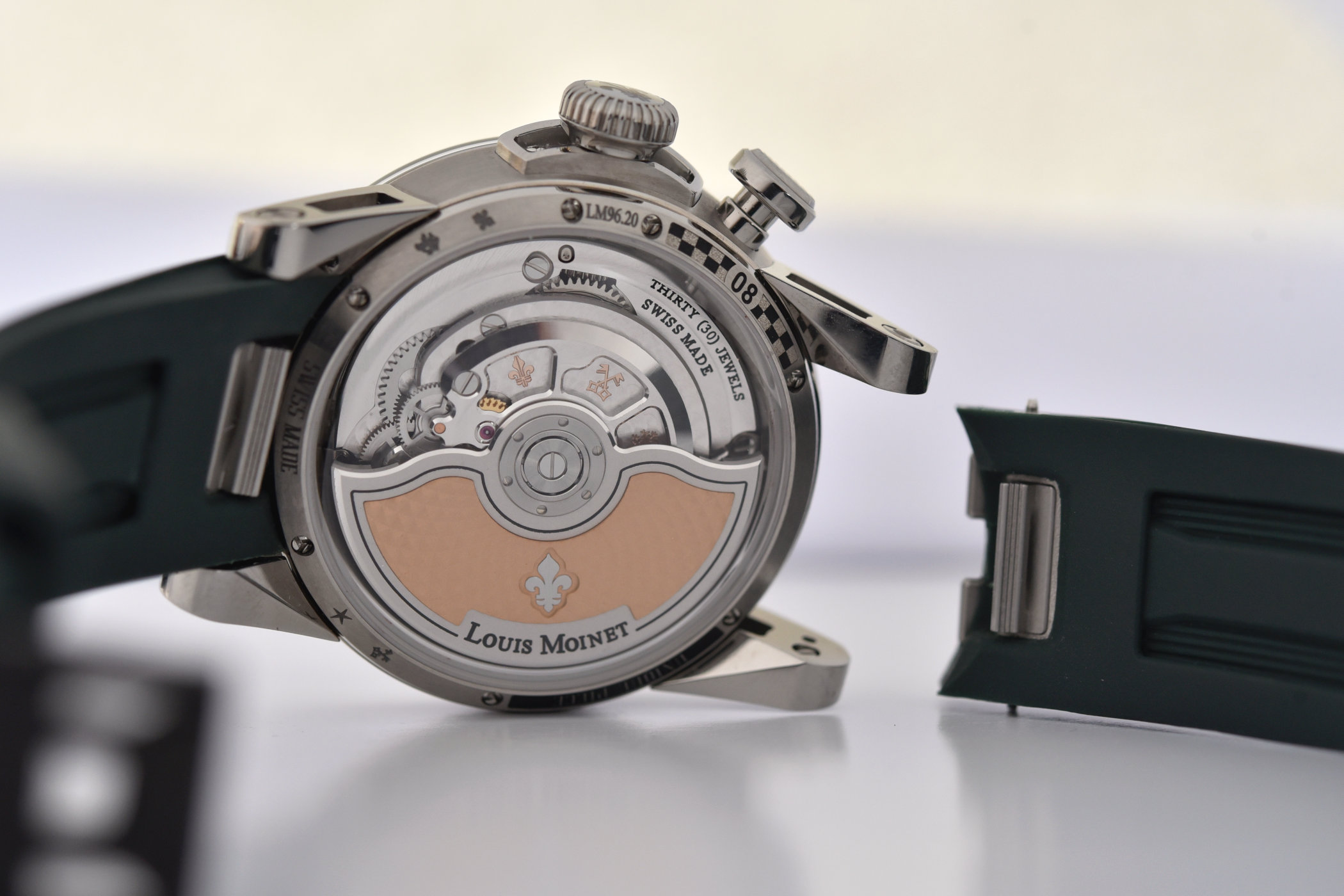Pimp Your Ride With The Louis Moinet Time To Race Chronograph
Pick a colour, a lucky number and enjoy a unique and close-up view of the dial-side chronograph action.
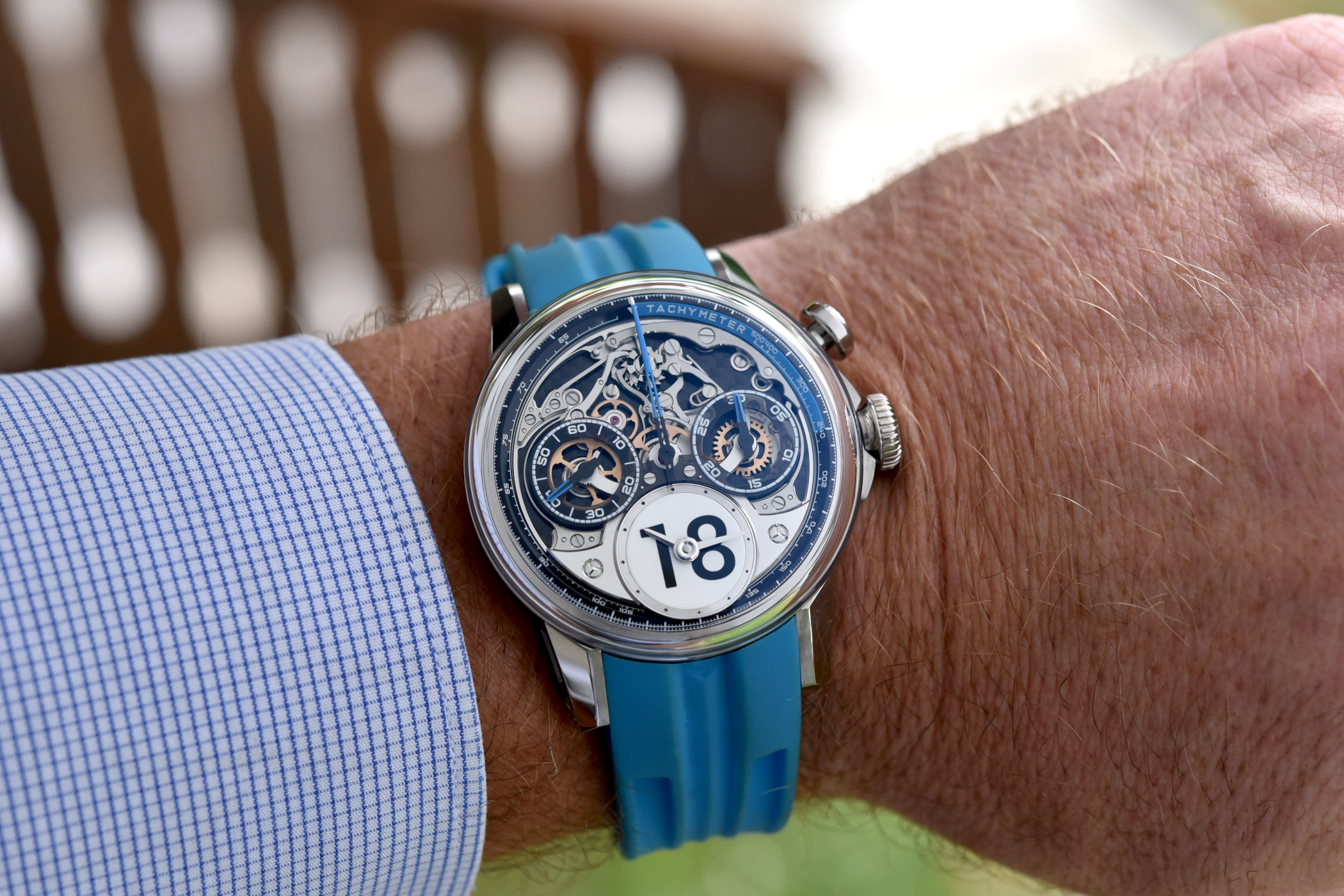
The story behind these fun, bespoke chronographs packs a good chunk of history, dating back to 1816 when horologist extraordinaire Louis Moinet produced the first world’s first chronograph. Known as the ‘Compteur de Tierces’, this pocket watch was designed to time the passage of stars and could measure events to 1/60th of a second, complete with start, stop and reset functions beating at an impressive 216,000vph! Given this head start in the race to measure elapsed times, Louis Moinet proposes the new Time to Race chronographs that can be customised with a lucky number and a choice of three racing-themed colours. Borrowing the smaller case dimensions of the recent 40.7mm Memoris Spirit, the chronograph complication of the Time to Race is displayed on the dial with a clear, open view of the column wheel and levers.
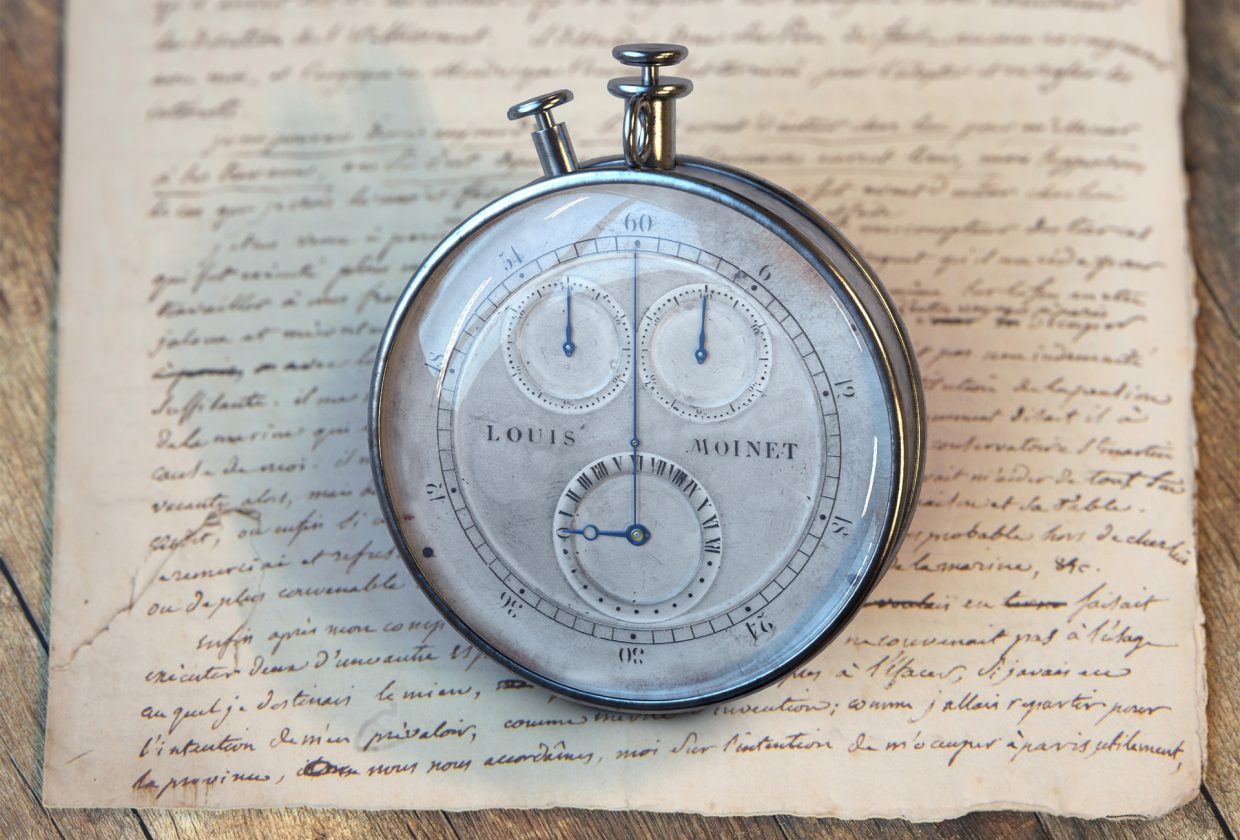
Pimp my Ride
Before looking at the chronograph, a few words to explain the concept of these ‘one-of-a-kind’ creations are in order. The Time to Race is not a limited series but sold as a customisable, bespoke product. First, you get to pick from a choice of three colours – Rosso Corsa, Racing Green and Bleu de France – and then you can choose a number between 1 and 99. Say I pick the colour Rosso Corsa and the number 7. Louis Moinet ensures that it will produce only one exclusive edition of the Rosso Corsa 7. If you want to view it numerically, there are 297 options in total, and whichever model you acquire will be unique. The colours are inspired by motor racing events until the end of the 1960s when cars were often identified with national colours: Italy was red, England was green and France blue. It’s worth noting that the Racing Green model is a candidate in the Chronograph section of the upcoming GPHG awards.
Tracking elapsed times
I have always enjoyed the exuberant mechanical showmanship and creativity behind Louis Moinet watches, a heady universe where nothing seems impossible. Producing one-of-a-kind or limited editions only, the brand’s timepieces take inspiration from the wildest source; the cosmos, Jules Verne, mythological creatures and even prosaic derricks pumping oil (automata) and architectural landmarks like the Taj Mahal populate the world of Louis Moinet, a brand presided over by CEO Jean-Marie Schaller since 2004.
Among the many precision instruments he invented during his prolific career, French horologist Louis Moinet (1768-1853) was belatedly acknowledged as the inventor of the chronograph, a feat generally attributed to Nicolas Rieussec with his 1/10th of a second chronograph (1821) to time horses racing on the Champ de Mars. History was rewritten in 2013 when a ‘Compteur de Tierces’ surfaced at a sale held by Christie’s in Geneva. Not only was Louis Moinet’s stopwatch five years older than Rieussec’s, but it was designed for astronomers and could measure recorded time to 1/60th of a second running at a breakneck speed of 216,000vph (30Hz). If you visit the brand’s website, you’ll see that Louis Moinet’s chronograph is acknowledged by the Guinness World Records as the “world’s first chronograph”.
There are plenty of chronographs at Louis Moinet grouped under the Memoris family that appeared in 2016 to celebrate the 200th anniversary of the Compteur de Tierces. Family traits include the position of the chronograph movement on the dial, a large 46mm precious metal or titanium case. For extra visual impact, the hours and minutes are relegated to a subsidiary dial. Then, earlier this year, Schaller decided to introduce a smaller, more compact 40.7mm version of the Memoris, renamed the Memoris Spirit. With a more streamlined case and a less ornate style, the viewing pleasure is enhanced with a pronounced domed sapphire crystal. As you can see, the Time to Race models adopt the same habitat as the Memoris Spirit but are bolder, racier, and much more fun.
Compact case
All three options share a grade 5 titanium case with a diameter of 40.7mm and a weight of just 18 grams displaying satin-brushed and polished finishings. Although it is a far less ornate case than those found on larger Memoris models, it is still imposing. A large knurled crown with guards at 3 o’clock and a prominent single piston-style pusher at 2 o’clock – with a hobnail pattern for better grip – command the right side of the case. Given the restraints imposed by the more compact 40.7mm case size, Louis Moinet’s watchmakers have created more vertical space by incorporating a high-domed sapphire crystal that rises up over the dial and extends over the edges, engulfing the bezel. Sitting almost flush with the movement, the panoramic sapphire crystal increases the viewing potential, allowing close-up views of the column-wheel movement from the top and side.
Chronograph movement lovers will have a feast with the view afforded on the dial, spotting some of the 147 components of the chronograph mechanism and the smooth choreography of the elements when the chronograph is activated. With one press of the pusher, the column wheel, levers, clutch, hammers, springs and wheels are set into motion. You can see the column wheel and lateral clutch at noon and the mainplate with its carbon fibre textured finishing in the background. The ultra-complex mainplate is a work of nanotechnology with 49 precisely drilled holes and a thin layer of braided carbon fibre to give it a racetrack look.
The imposing curvature of the sapphire crystal might increase viewing pleasure, but it posed another challenge for the designers. Obviously, an external tachymeter bezel is out of the question, so how can you incorporate a bezel that can be discerned around a stacked movement? Louis Moinet’s designers came up with an ingenious solution in the form of a triangular flange. We’ve all seen sloping flanges, but this 3D flange rises like a small mountain peak allowing both sides of its surfaces to display information. This dual flange indicator shows the classic 60-second track on the external slope of the flange and a tachymeter scale on the internal slope. Depending on the colour chosen, the first quarter of the tachymeter scale and the central chronograph seconds hand are picked out in red for Corsa Rosso, yellow for Racing Green and blue for Bleu de France. The central chrono hand has a white tip that reaches all the way to the external 60-second track and arches at the tip to follow the contours of the sapphire crystal habitat.
But there was still the issue of legibility. Given the amount of information vying for your attention on the dial, certain elements have been treated with an innovative luminous technique. Both scales on the triangular flange are picked out with a luminous transfer, as are the elapsed time counters at 9 and 3 o’clock and the chronograph hands. This innovative treatment applies the colourful Super-LumiNova with pad printing. Unlike regular screen-printed lume, pad printing ensures the matte, flat appearance of the lume that is less than 1/10th of mm.
Lucky Numbers
The lucky chosen number occupies the centre of the glossy white hour and minutes sub-dial at 6 o’clock. Framed by a circular brushed ring that looks like the bores used in racing cars, the lucky number isn’t just painted on the dial. Using a proprietary mixture developed with partner GVA Cadrans, the white area of the dial is hollowed out before the black number or numbers are cast, fired in a kiln and polished, giving the small sub-dial its depth and brilliance.
LM96
Inside the Louis Moinet Time To Race is the automatic calibre LM96, a proprietary movement developed together with movement manufacturer Concepto. Its original dial-side display, with its column wheel and horizontal clutch, reveals some of the 147 components of the chronograph, while the lower part contains the 164 components corresponding to the self-winding movement. Although the chronograph steals the show, the movement’s other side is visible through the exhibition caseback with a guilloché Clous de Paris (hobnail) rotor adorned with a Fleur de Lys and other refined finishings including perlage, polished edges and diamond-polished sinks. Beating at 4Hz, the watch delivers a reasonable 48-hour power reserve.
Rubber Straps
The openworked lugs feature a satin-brushed camber and are tipped with four black zircons with chatons held by screws. The sharp profile of the lugs is echoed by the vertical lines that have been embossed into the rubber straps, seamlessly integrated into the case and fitted with a triple-folding clasp.
Availability & Price
There are, in fact, four models (additional fluorescent green model on the website) of the Time To Race waiting to be customised. Although prices are not posted, the model on the GPHG page has a retail price of CHF 30,500, so expect something in the vicinity.
For more information, please visit louismoinet.com.

